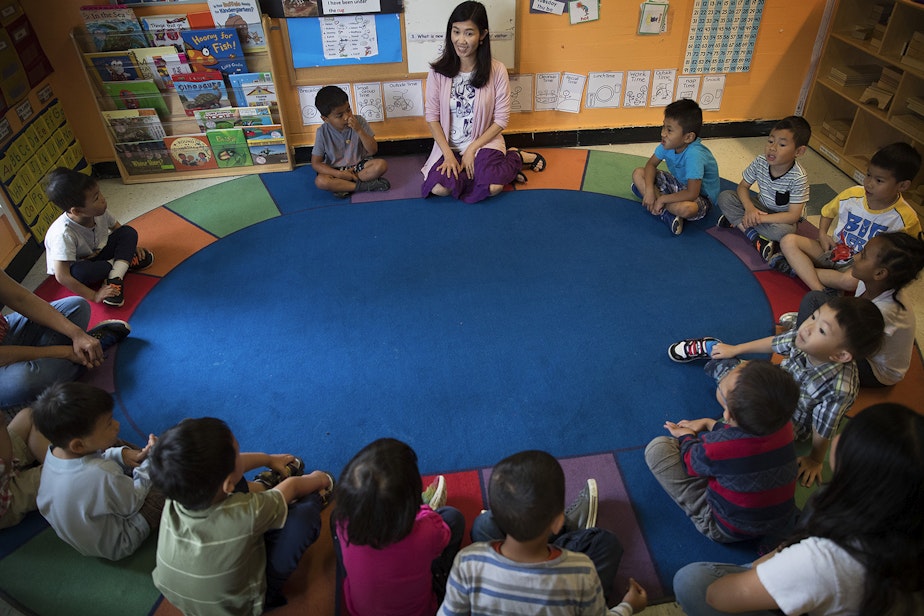Inside Seattle Schools' budget: Staff cuts, but no teacher layoffs or school closures

When the new school year kicks off in September, Seattle students might notice some changes in their schools due to budget cuts.
On Thursday, the Seattle School Board unanimously approved a budget for next school year, closing a $131 million shortfall.
District officials stressed that no teachers or school-based staff were cut, but about 40 staffers will shift to different schools depending on typical staff turnover and individual school enrollment. The budget, however, includes layoffs for at least 70 central office employees.
In addition to those cuts, the district shaved about $10 million at the school level with some reductions that will show up in classrooms. For example, class sizes will increase by one student in first and second grade classrooms, except in high-poverty schools.
In addition, about five schools will lose assistant principals, and a dozen elementary and K-8 schools will have new start and end times to save the district more than $6 million on transportation.
Sponsored
Starting this fall, Bailey Gatzert, Dearborn Park, John Hay, Green Lake, South Shore PreK-8, View Ridge, and West Woodland will start at 8:55 a.m., an hour later than the previous year. Adams, Concord, Licton Springs K-8, Thurgood Marshall, and TOPS K-8 will start at 7:55 a.m., an hour earlier than last year.
The fiscal plan drains the district’s $42 million rainy day fund, despite board policy recommending it remain at a minimum of $33 million. As part of the budget, the fund will be replenished through a five-year repayment plan in which the district contributes a minimum of $6.6 million annually.
“By fixing and adopting this budget, you’ll have overcome some huge challenges,” Fred Podesta, the district’s chief operations officer, told the board.
The school board’s Thursday vote puts an end to a challenging budget season. But next year’s budget process could prove even more contentious, as the district explores more reductions, including possible school closures.
Superintendent Brent Jones warned that more tough conversations are ahead, but called it an opportunity to make the district more efficient.
Sponsored
“I want to emphasize that this is not a conversation about school consolidation and scarcity,” he said. “And there’s no predetermined list of schools for consolidation, nor a playbook from other districts on school closures.”
Jones said the goal is to create schools where students feel safe, successful, and supported in their learning.
The district will hold five in-person meetings August 8-15, as well as an online meeting Aug. 29. Officials said more details would be shared in two weeks.
Several school board members, including Lisa Rivera Smith, encouraged families to attend the meetings and provide input before Jones is expected to make recommendations in October.
“I really just want to make a plea to families that when you see an email that says we need your feedback, we mean it,” she said. “It’s easy to be jaded and feel like your feedback can’t move the needle. But it really, really can, and we genuinely need that and want that.”




